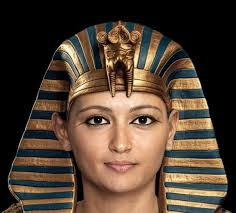Introduction
When we think of ancient Egyptian rulers, images of male pharaohs like Tutankhamun or Ramses II often come to mind. However, history has largely overlooked the female pharaohs who once reigned over one of the most powerful civilizations in the ancient world. These women were not just wives of kings or royal consorts but powerful leaders in their own right, who made significant contributions to the history and culture of Egypt. In this article, we will explore the hidden history of the female pharaohs, focusing on their reigns, the challenges they faced, and the legacy they left behind.
Who Were the Female Pharaohs?
The title “pharaoh” was traditionally associated with male rulers of Egypt, but history has shown that women could and did ascend to the throne. These female rulers were often faced with societal and political challenges due to their gender, yet they proved capable of navigating these hurdles and ruling Egypt effectively.
Some of the most notable female pharaohs include Sobekneferu, Hatshepsut, and Cleopatra. Each of these women carved out a distinct role in Egyptian history, ruling Egypt during different dynastic periods.
Sobekneferu: The First Female Pharaoh

Sobekneferu, who reigned around 1800 BCE, is considered the first documented female pharaoh of Egypt. She ruled at the end of the 12th Dynasty and was the daughter of Amenemhat III. Sobekneferu’s reign was short but impactful. She may have ascended the throne due to a lack of male heirs or after the death of her brother, Amenemhat IV.
Though Sobekneferu is not as well-known as some of the other female pharaohs, she holds an important place in history for breaking the gender barriers of royal succession. She is often depicted wearing traditional male pharaoh attire, including the royal beard and crown, symbolizing her full authority as a ruler.
Hatshepsut: The Powerful Female King

Perhaps the most famous female pharaoh, Hatshepsut, reigned from 1479 to 1458 BCE during the 18th Dynasty. The daughter of Thutmose I, Hatshepsut initially served as regent for her young stepson, Thutmose III. However, after a few years, she took the extraordinary step of declaring herself pharaoh.
Hatshepsut’s reign was marked by peace, prosperity, and monumental construction projects, including the famous Temple of Deir el-Bahari. She promoted trade expeditions, notably to the Land of Punt, which brought wealth to Egypt. Her rule demonstrated that a woman could not only govern but also expand Egypt’s influence abroad.
Despite her successes, after her death, Thutmose III sought to erase her memory, possibly to reinforce male dominance in Egyptian leadership. Many of her statues and inscriptions were defaced, and her name was removed from royal lists.
Cleopatra VII: The Last Pharaoh of Egypt
The final female pharaoh of Egypt, Cleopatra VII, is one of the most famous women in ancient history. She ruled from 51 to 30 BCE and is often remembered for her relationships with Julius Caesar and Mark Antony. However, her political acumen and ability to maintain Egypt’s independence from the expanding Roman Empire are what truly define her legacy.
Cleopatra was well-educated and multilingual, known for her diplomatic skills and her ability to engage in complex negotiations. She worked tirelessly to preserve Egypt’s sovereignty in the face of Roman imperialism, which ultimately led to her tragic downfall after the defeat by Augustus (formerly Octavian) at the Battle of Actium. Her death marked the end of the Ptolemaic dynasty and Egypt’s transition into Roman control.
The Challenges Faced by Female Pharaohs
Female pharaohs in ancient Egypt were often faced with unique challenges, largely due to the patriarchal nature of Egyptian society. While the title of pharaoh was theoretically available to women, their ascension to the throne was typically surrounded by controversy.
In many cases, a female ruler would either marry a male relative or adopt a male persona to legitimize her reign. Hatshepsut, for instance, was depicted in male attire, including the false beard traditionally worn by male pharaohs, to present herself as a rightful king. Cleopatra, on the other hand, was presented as a divine figure, leveraging her relationships with Roman rulers to strengthen her political power.
Despite these challenges, these women proved themselves capable leaders, navigating the intricate politics of their time while facing down opposition.
The Legacy of Female Pharaohs
The legacies of female pharaohs are varied and complex. While some, like Hatshepsut, were actively erased from history by their successors, others, like Cleopatra, left a lasting imprint on the world. Their reigns demonstrated that women could lead with intelligence, strength, and foresight, challenging the traditional gender roles of their time.
The impact of these women is still felt today. Their stories continue to inspire people, particularly women, who look to their examples of leadership, resilience, and determination.
The Role of Religion in Female Leadership
Religion played an essential role in legitimizing the reigns of female pharaohs. In ancient Egypt, the king (or pharaoh) was often seen as the earthly representative of the gods, a divine intermediary between the gods and the people. Female pharaohs were often portrayed as chosen by the gods, using divine sanction to assert their authority.
Hatshepsut, for example, aligned herself with the gods by presenting herself as the daughter of Amun, a major Egyptian deity. This divine connection was critical in reinforcing her rule and convincing the Egyptian people of her legitimacy.
Modern Interpretations of Female Pharaohs
In modern times, the stories of female pharaohs have been reinterpreted through various lenses, from feminism to post-colonialism. These rulers, once considered anomalies in a male-dominated society, are now seen as symbols of female empowerment and leadership.
The discovery of their tombs, artifacts, and statues has also sparked renewed interest in these figures. Museums and archaeological sites across the world are now showcasing the achievements of female pharaohs, giving them the recognition they were denied in their own time.
Historical Revisions: Reclaiming Their Stories
While many of these powerful women were erased from history, recent scholarship has worked to reclaim their stories and highlight their contributions. Archaeologists and historians are revisiting ancient texts, inscriptions, and monuments to uncover the truth about these queens who ruled Egypt.
In many ways, the rediscovery of these female pharaohs is a reclamation of history a way to correct the historical record and give voice to those who were once silenced.
Conclusion
The female pharaohs of ancient Egypt were remarkable leaders who faced enormous challenges but still left an indelible mark on history. Their stories, often hidden or erased, deserve to be told and celebrated. Whether they ruled as queens in their own right or navigated complex political landscapes, they demonstrated the power of leadership, resilience, and cultural identity. As we continue to uncover and reflect on their legacies, we gain a deeper understanding of not only ancient Egypt but the ongoing struggle for gender equality and recognition throughout history.
FAQs
1. Who was the first female pharaoh of Egypt?
The first recorded female pharaoh of Egypt was Sobekneferu, who reigned around 1800 BCE during the 12th Dynasty.
2. Why did Hatshepsut dress as a man?
Hatshepsut dressed as a man and wore traditional male pharaoh attire, including a false beard, to legitimize her rule in a patriarchal society and gain acceptance as pharaoh.
3. What is Cleopatra best known for?
Cleopatra is best known for her political alliances with Julius Caesar and Mark Antony, which were pivotal in her efforts to preserve Egypt’s independence from Rome.
4. Were female pharaohs common in ancient Egypt?
Female pharaohs were rare, but some, like Sobekneferu, Hatshepsut, and Cleopatra, ruled Egypt and demonstrated the ability to lead effectively in a male-dominated society.
5. How did female pharaohs gain legitimacy in ancient Egypt?
Female pharaohs often used religion and divine sanction to legitimize their reign, presenting themselves as chosen by the gods to rule Egypt.


